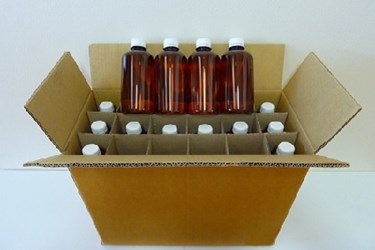PMMI Tells The Good And The Bad Of The Secondary-Packaging Market
By Laurel Maloy, contributing writer, Food Online

According to PMMI’s 2014 Executive Summary regarding the secondary packaging market, the number of companies making drastic changes to secondary packaging is declining. However, demand for improvement is still changing the face of the secondary-packaging market
According to the Association for Packaging and Processing Technologies (PMMI) 2014 Secondary Packaging Market Research Study, secondary packaging is being used more than ever before to garner customer attention at the point of sale. Unlike the previous study, performed in 2008 in which 100 percent of product manufacturers made changes in order to reduce secondary packaging costs, the 2014 numbers show only 55 percent that actually implemented changes. Additionally, this same 55 percent do not see further changes coming in the future.
In 2008, the secondary-packaging market was largely driven by retail demands that were being determined by consumer preferences for sustainable and recyclable packaging. Consumers are still enamored of biodegradable, recycled, and sustainable materials. However, most of what can be changed has been changed. The need to retool and rethink secondary-packaging manufacturing has leveled out as the consumers’ demands have been met.
A New Direction For Hygienic Secondary Packaging
What is becoming ever-more important is the need for attractive, shelf-ready, lighter-weight packaging with increased product protection and sustainability. The perception of responsible environmental stewardship is still a hot button issue as well. Walmart is the primary driver for the “wish list” of secondary-packaging attributes, though Kroger, Sam’s Club, and Costco also will determine the future of secondary packaging. While Walmart is trending toward making the consumer happy, Kroger wants to reduce in-store labor and the two wholesale giants want to get more products on the shelf. Product security and smaller-sized packaging — albeit with greater volume — is right up there with greater product visibility.
PMMI’s Beverage Packaging Market Assessment
Also different from the 2008 report is the fact that beverage companies are increasingly trying to make the move away from glass to plastic or cans for primary packaging — though consumers still cringe at the thought. Additionally, these companies want lighter-weight secondary packaging with greater strength, which has always been a desire, but not necessarily easily attainable due to the commodity.
As always, it’s a matter of taking the good news right along with the bad:
The GOOD — Better machining has resulted in fewer companies experiencing down-time associated with varying recycled-fiber content and thicknesses. Increasing Edge Crush Test (ECT) parameters is being accomplished with lighter-weighted, fewer materials, along with improvements having been made in cutting, gluing, and printing.
The BAD — Prices for paper and the associated packaging products continue to rise. The price for corrugated boxes is expected to rise at an annualized rate of three percent through 2017. Manufacturers are still working the bugs out of strength issues, while attempting to reduce porosity levels that are affecting the print quality, therefore the appearance on the shelf. Foreign materials in recycled products continue to set off metal detectors during the inspection process.
Looking ahead, technological advances in machining, robotics, and the use of bio-polymer materials will continue to improve secondary packaging. Additionally, secondary packaging will become ever-more instrumental in the tracking process with the changing landscape of track and trace regulation. The future of secondary packaging may include additives to strengthen corrugated board, more commonality in box sizes and styles, and reusable or recyclable container designs, for the industry and the consumer.
